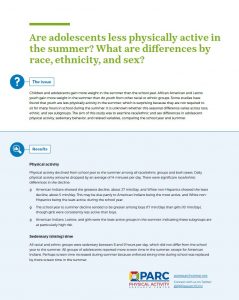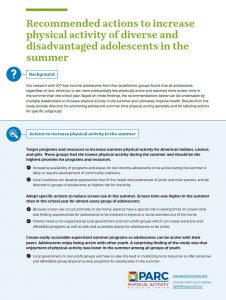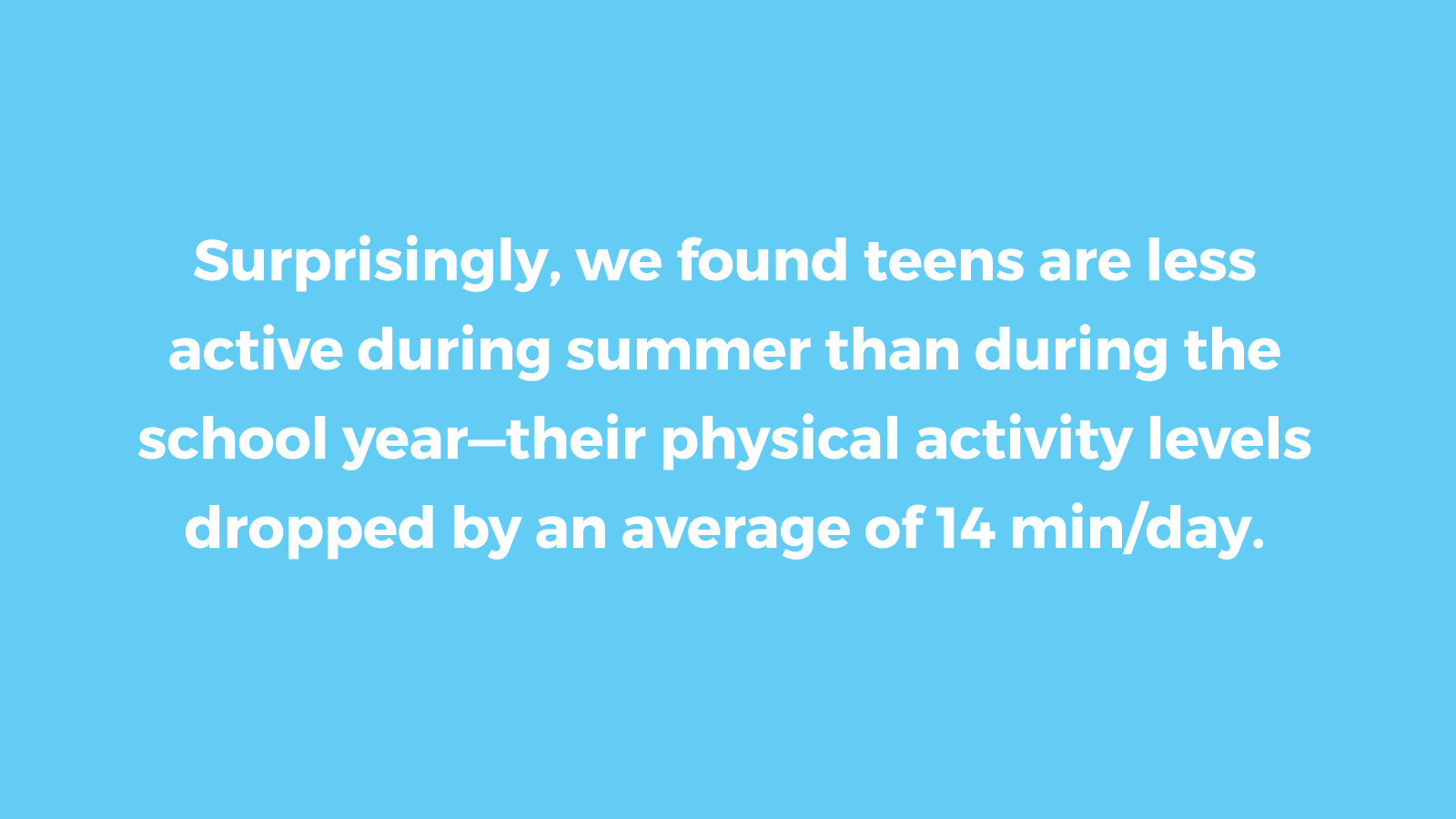 UC San Diego School of Medicine
UC San Diego School of Medicine
Youth Physical Activity in Summer vs. School Year: Patterns and Disparities
Description
Adolescents have lower levels of physical activity (PA) and more rapid weight gain during summertime when they are not attending school. This is unexpected because traditionally children have more time for PA during the summer. The reasons for children’s worsening health indicators over the summer are not clear. Given disparities in summer weight gain, it is important to understand PA patterns, opportunities, and barriers for the major race/ethnic subgroups to inform possible solutions tailored to these subgroups.
The study’s primary aim is to compare PA patterns and the places where PA occurs among diverse adolescent subgroups. The target population is adolescents living in lower-income areas and representing the major US race/ethnic groups: African American, Latino, American Indian, Asian, Pacific Islander, and White-non Hispanic. Forty adolescents in 6 race/ethnic groups (11-17 years old; total n=240) are being recruited and measured during the school year and during summertime. Two types of measures are collected: (a) objectively assessed PA using accelerometers; and (b) surveys about preferred PA activities and places, sedentary behaviors, and perceived barriers and opportunities for PA. Comparisons will be made across two dimensions: (1) summertime versus school year; and (2) race/ethnic subgroups. Findings will be the basis for subgroup-specific recommendations about policies to promote summertime PA, especially in high-risk groups.
By studying how and where children from specific ethnic/racial subgroups are active and inactive during the school year and summer, we can recommend policy and environmental changes that are tailored to specific groups. If we find that children spend more time in parks in the summer, but are not very active there, we can recommend more free/low-cost activity programs in the summer and construction of more PA facilities in those parks. If we find that children spend more time in their home neighborhoods in the summer and are not active there, we can recommend more investment to create safer walking and bicycling conditions, regular Play Streets, transformation of vacant lots to pocket parks with play equipment, or improved transportation to and reduced fees for activity programs in public or private facilities. These interventions can be targeted to vulnerable children through need-based funding.
Communication Plan
In coordination with partners, our planned communication products include research briefs, infographics, webinars, and conferences targeting researchers and practitioners in fields such as social justice, recreation, public health, and pediatric/medical audiences, as well as RWJF healthy weight partners.
Research Findings and Products
- Race/Ethnic Variations in School-Year versus Summer Differences in Adolescent Physical Activity, in Preventive Medicine 2019, 129. doi.org/10.1016/j.ypmed.2019.105795.
- A 3-page lay summary highlighting the main research findings of the Preventive Medicine article is available: Are Adolescents Less Physically Active in the Summer?
- A 4-page lay summary providing evidence-based recommended actions from the study is available: Recommended Actions to Increase Physical Activity of Diverse and Disadvantaged Adolescents in the Summer.
- Summertime Physical Activity Among Diverse Adolescents: What About COVID-19?– Article in PlayCORE’s Placemaking magazine.
- Electronic Devices as Correlates of Sedentary Behavior and Screen Time Among Diverse Low-Income Adolescents During the School Year and Summer Time – in Journal of Healthy Eating and Active Living. 2020
- A 2-page lay summary is also available for this article.
Project Team
James F. Sallis, PhD – Principal Investigator, [email protected]
Terry L. Conway, PhD – Co-Principal Investigator, [email protected]
Kelli L. Cain, MA, PhD Candidate – Project Manager
Carrie M. Geremia – Research Associate
Edith A. Bonilla, BS – Study Coordinator
Serena E. Ruiz, BS – Research Assistant
Chad Spoon, MRP – Research Associate




